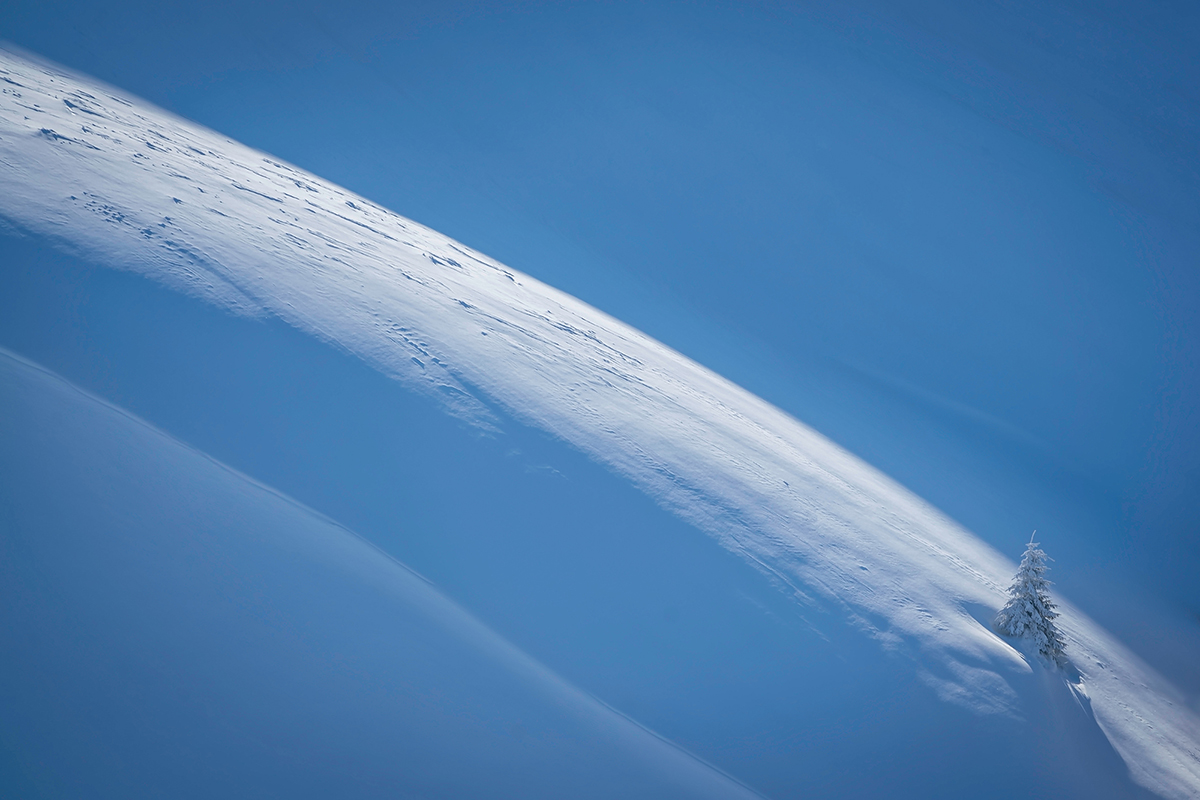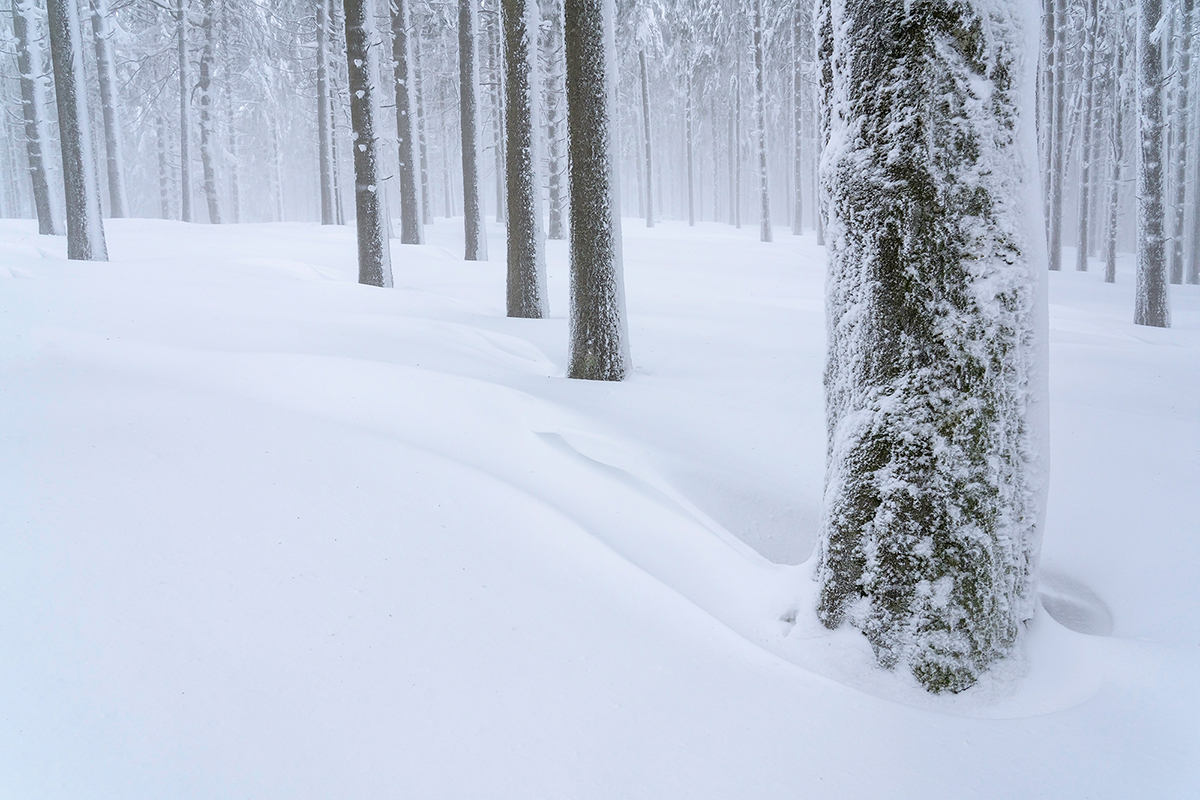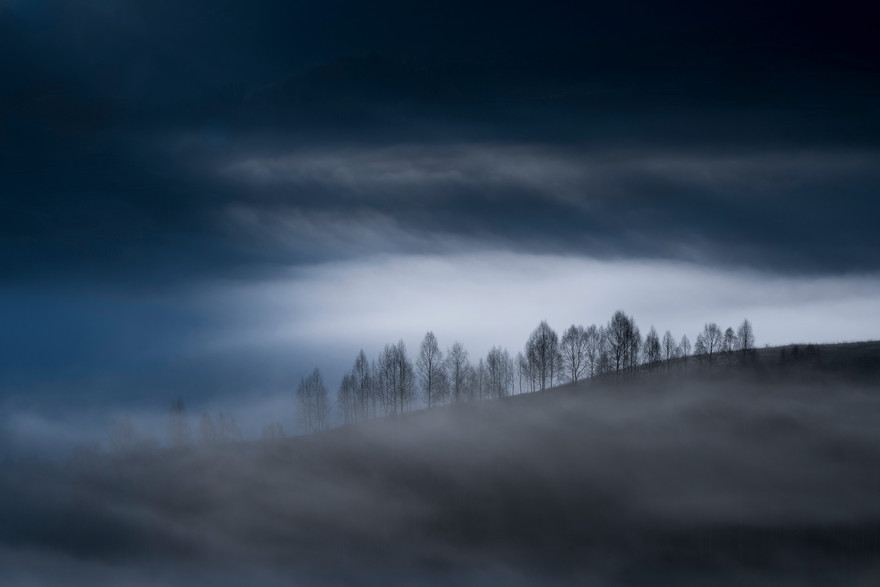Daniel Mîrlea is a Romanian landscape and nature photographer passionate about discovering new places. Daniel’s photographic adventure started at the end of 2015 with a hike in Cozia National Park in Romania, where he was photographing the Făgăraș Mountains. Two years later, he quit his job as a manager, to do nature photography. For him, photography is not just taking photos, it is a way of life. Daniel says that nature is his home, and through photography, he is trying to show other people how beautiful and vital to our lives it is. He believes that everything in nature is connected, and we, as nature photographers, have a mission when we are in the field: to protect the environment and to take with us just the memories of that moment and the photograph itself. Daniel firmly believes that through photography, we can help nature's conservation. Because of this, he is collaborating with conservation and nature protecting NGOs, like WWF Romania, Rewilding Europe, and Conservation Carpathia. Since January 2020, he is a vice-president of the Romanian Nature Photography Association called FORONA, and since June 2020, a Community Advocate at Nature First Photography.
1. What was your path to become a photographer?
Since I was a kid, I had a special connection with nature. I remember how I read geography magazines (called Terra Magazin) believing that someday I will go to these places and will photograph them myself. My real photographic adventure (I like calling it so, because everything connected with photography is for me a continuous adventure) started at the end of 2015 during a hike in Cozia National Park (Romania). There, in a flash, I started to believe that I could become a photographer. I remember well when it happened, I was looking at sunset light on the Făgăraș Mountains. Since that moment, I became a dedicated photographer, but for almost 2 years, I was just a weekends and holidays’ photographer. Having a job was time consuming, and it was not possible for me to be in the countryside as much as I wanted. But, in 2017, with the full support of my wife, I left my job to do nature photography full time. And, right now... here I am.
2. Do you prefer to photograph close to home or do you find faraway places more inspiring? Are there any special places that inspire you the most to create new work?
It depends. There are places close to my home that are full of surprises. For example, I captured some important moments of the life of birds, very close to my home in winter, and also some nature details, that at first, I never thought I would. I believe that one just needs to observe and to be patient to photograph nature anywhere.
To be honest however, my heart is left in Iceland, somewhere on a black beach. What I felt there, I never experienced anywhere else. All that nature there, the harsh conditions, silence when you are in the field photographing, the beauty of nature elements… that place is special. I was there twice, but I can’t wait to go again and to stay longer. Photography wise, there is so much to capture there, and I am not referring to the most known photo locations. In there, no matter which direction you go, there is something beautiful in front of your eyes.
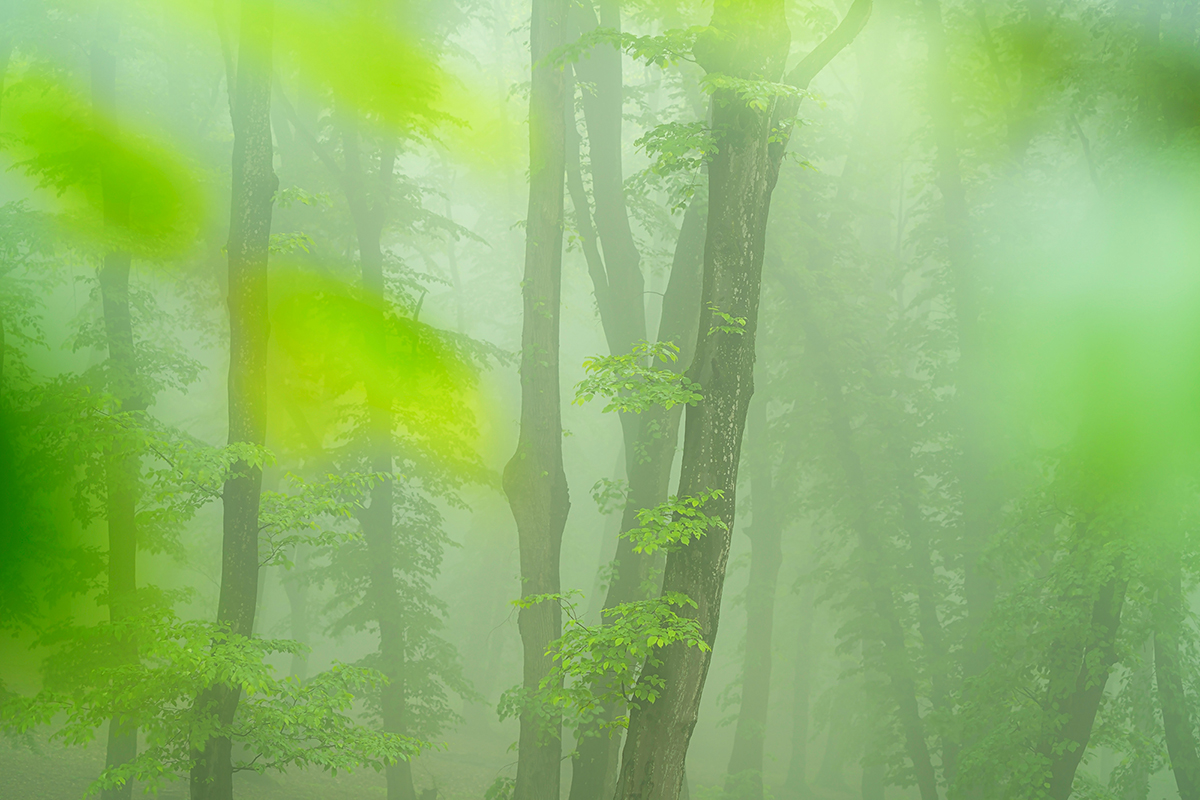
3. Are you a meticulous pre-planer or do you prefer creating images spontaneously? Do you revisit your favourite places many times to achieve the required result? Can you tell us more about your method of working?
I am not a pre-planer, although I have some ideas of a photo in my head before I go somewhere, but often I end-up doing something totally different. It depends a lot how inspired I am with a place at a particular moment, as I can’t take photographs if I don’t ‘feel’ the place. I revisit locations to create better photographs, because usually, when I go back home, I am saying to myself that it is not enough and I should work harder. So, each time I go back to that place, I am trying to discover something new. For example, the place that made me decide that I want to become a photographer – Cozia National Park – it’s like home for me. I go there very often, but always, I am trying to find a different view and capture different photo. To conclude, I guess I am around 15% a meticulous planner, and 85% spontaneous when it comes to photography, but when I prepare a photo tour, these percentages are changing pretty much.
4. Terra Quantum displays themes and series portfolios; do you like working to the project/series/theme or find creating individual images more rewarding?
I guess I am somewhere in between. I have projects and themes (many of them I have started, but not finished yet) but I consider them pretty challenging. You need to be dedicated to the subject or theme you have chosen and that involves a self-discipline.
5. Can you tell us a bit more about one chosen photograph – what is the story behind it, when/why/how it was created?
Usually, during the summer time, I can’t have too much sleep if I want to capture both, sunrise and sunset. Also, if you have a friend who's snoring very, very loud, you can say goodbye to your sleep at all! The story of this photo begins with ‘I had that friend with me’. The entire night he kept me awake, and when I finally fallen asleep (around 3:20), I hear at 3:25 a question from my friend, ‘are you sleeping’? He couldn't sleep anymore, so we started to hike through a dense forest to the lake. It was around 4:20 when we arrived at the shore. The moon lit the mist, which embraced the lake and the ghostly trees. I laid down on the grass and watched the sky for 2 hours, I also listened to red deer grunting, because it was their mating season. Just after the sunrise, I discovered the beauty of the lake - an entire forest swallowed by water, trapped in a mystical fog.
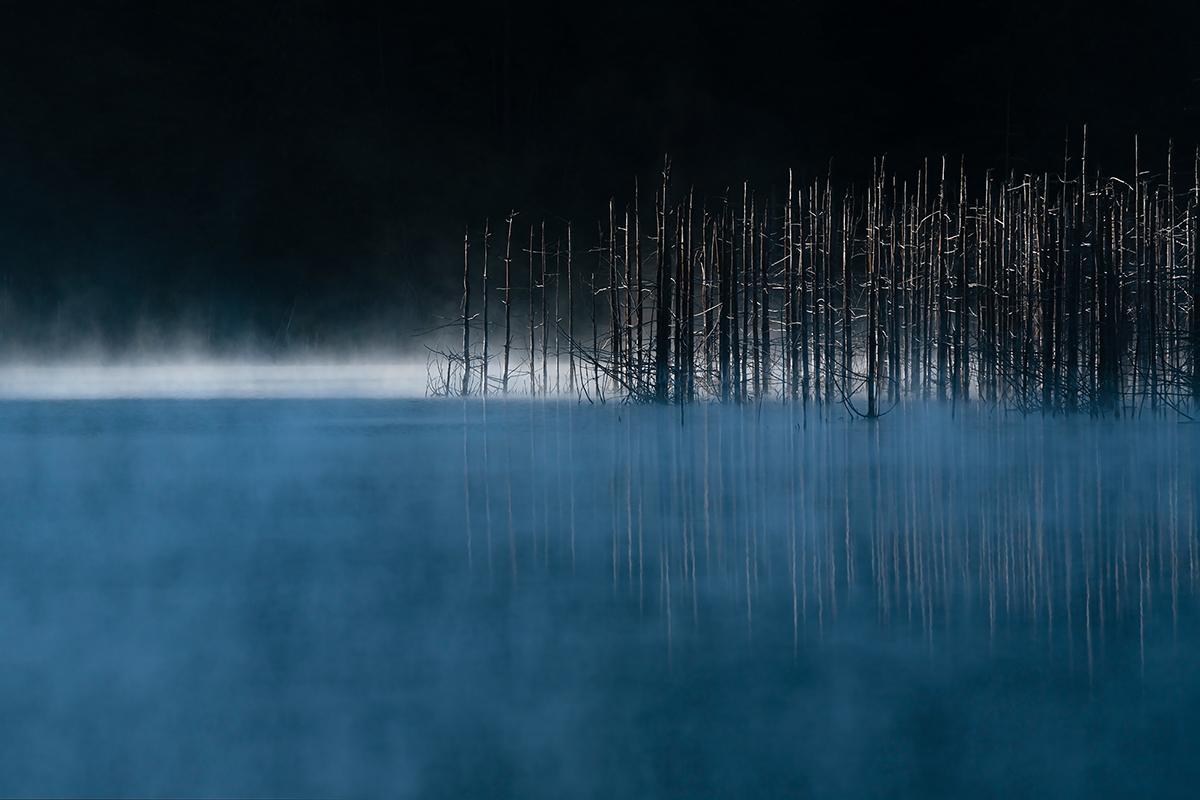
6. Colour, b&w or both? How do you decide about the elimination or inclusion of colour and why. When do you decide about it - in the field or during the post processing?
99% color, 1% black and white. I appreciate a lot photographers that are creating their work in black and white (let’s remember that in the beginning, all photography was black and white and it was stunning), but I prefer colour in my photographs. I feel that colour makes photographs ‘alive’, and people who never saw a particular place or a moment I captured, can experience it through the photograph.
7. Do you find printing your images yourself as an integral part of image creation or do you use professional labs? How important is the choice of paper for you?
When it comes to a print, this definitely is the job of a professional lab. The choice of paper is important and it always depends on the purpose you print the photos.
8. Do you think that social media is killing photography or playing an important role in promoting your work? How involved are you in your online presence?
Social media is not necessary killing photography, but it is making others kill nature for photography. There are many places that are damaged because of photography and because the location has been shared. Right now, success on social media is based on ‘likes’ or ‘love’ emoticons, which in many cases, is just an automatic reaction when people navigate through pages. On the other hand, social media are useful to present photos to many people, that otherwise wouldn’t be possible. It is like an online exhibition with a never-ending source of photos that allow you to visit a place or to experience a moment in time.
7. Do you find printing your images yourself as an integral part of image creation or do you use professional labs? How important is the choice of paper for you?
When it comes to a print, this definitely is the job of a professional lab. The choice of paper is important and it always depends on the purpose you print the photos.
8. Do you think that social media is killing photography or playing an important role in promoting your work? How involved are you in your online presence?
Social media is not necessary killing photography, but it is making others kill nature for photography. There are many places that are damaged because of photography and because the location has been shared. Right now, success on social media is based on ‘likes’ or ‘love’ emoticons, which in many cases, is just an automatic reaction when people navigate through pages. On the other hand, social media are useful to present photos to many people, that otherwise wouldn’t be possible. It is like an online exhibition with a never-ending source of photos that allow you to visit a place or to experience a moment in time.
9. Do you have any plans for exhibitions, books or any interesting projects coming? Can you tell us a bit more about your artistic plans for the next couple of years?
Starting next year, I will be involved in 2 major projects on conservation and when they are finished, in 2022-2023, we will have some exhibitions and at least one book. A project should have started this year, but with all the problems we have right now, it was pretty hard to put it all together. Let’s hope that next year we will be able to continue our photographic work and only some bad memories of the current problems will linger.
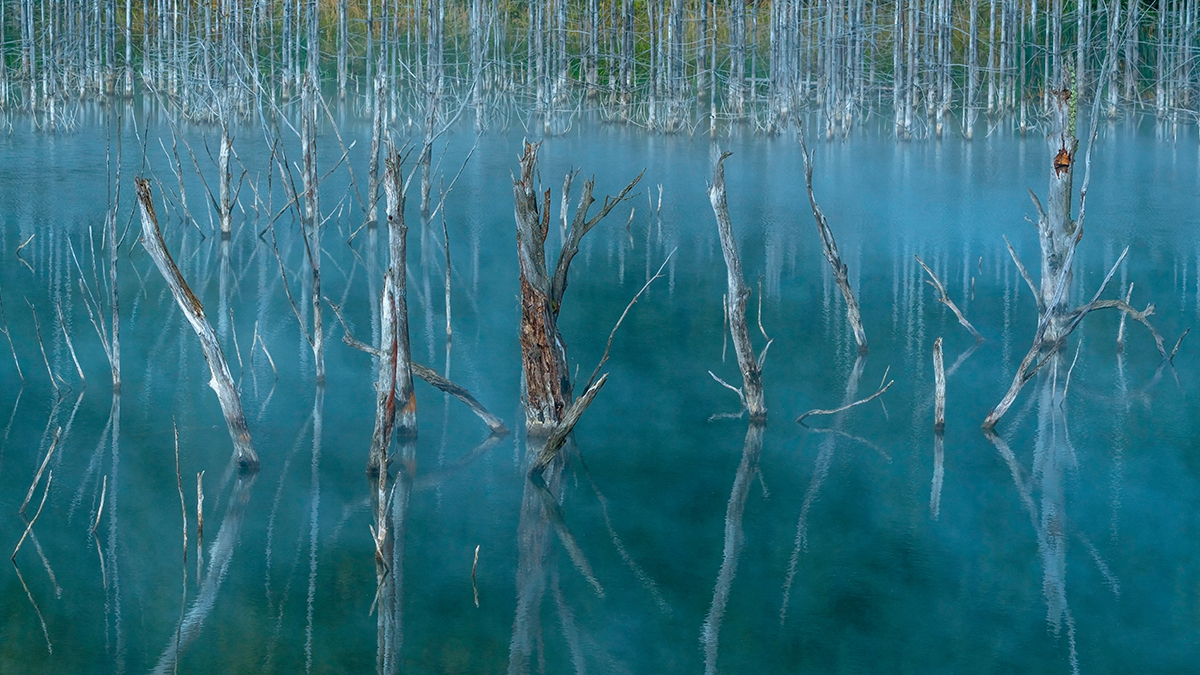
10. We are living on the most beautiful planet, yet it is over-burdened and over-polluted. As photography is an influential medium, do you use the power of your photographs to promote our Earth appreciation and environmental awareness? Any thoughts how photographers in general can become more involved in this important matter?
Since I became a photographer, one of the main goals for me was to help people to understand how important biodiversity and ecosystems are for our lives. Because of that, I collaborate with known conservation NGOs like WWF, Rewilding Europe and Conversation Carpathia. As a photographer, it is rewarding to help conservation; it is important that photographers should follow some principles in nature photography, principles of not doing any harm to nature. Since this June, together with my wife, I become Community Advocate at Nature First Photography, The Alliance for Responsible Nature Photography. Nature First is built on seven core principles that help communicate how each of us can enjoy nature photography responsibly.
We, as photographers can play a very important role in conservation, we just need to be willing to help and also to learn more about conservation and ways of protecting nature.
